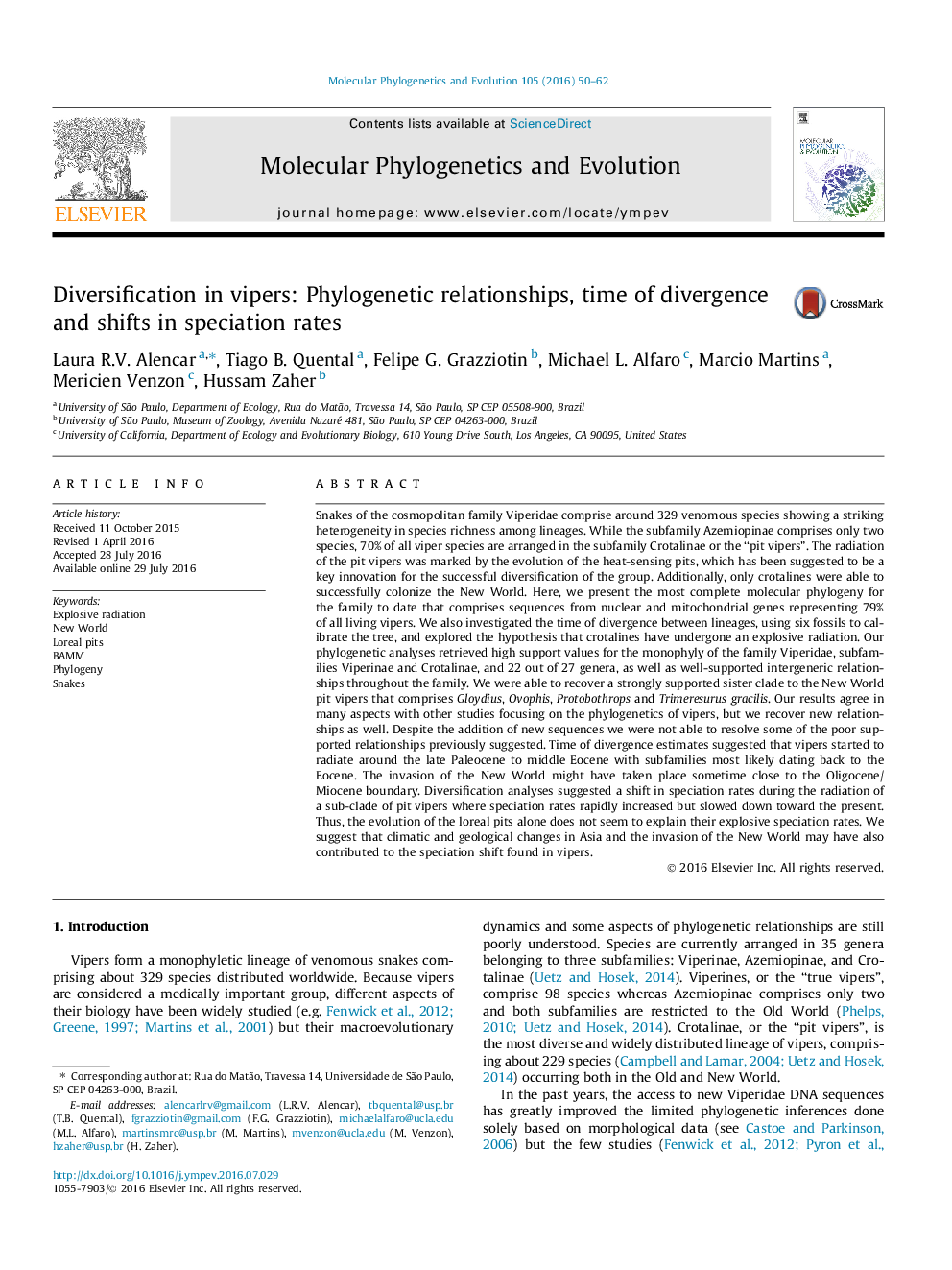| کد مقاله | کد نشریه | سال انتشار | مقاله انگلیسی | نسخه تمام متن |
|---|---|---|---|---|
| 2833611 | 1570792 | 2016 | 13 صفحه PDF | دانلود رایگان |
• We generated a molecular phylogeny for 79% species of vipers.
• We provide divergence time estimates between lineages.
• Vipers are characterized by two distinct diversification regimes.
• Speciation rates rapidly increased in a sub-clade of pit vipers.
Snakes of the cosmopolitan family Viperidae comprise around 329 venomous species showing a striking heterogeneity in species richness among lineages. While the subfamily Azemiopinae comprises only two species, 70% of all viper species are arranged in the subfamily Crotalinae or the “pit vipers”. The radiation of the pit vipers was marked by the evolution of the heat-sensing pits, which has been suggested to be a key innovation for the successful diversification of the group. Additionally, only crotalines were able to successfully colonize the New World. Here, we present the most complete molecular phylogeny for the family to date that comprises sequences from nuclear and mitochondrial genes representing 79% of all living vipers. We also investigated the time of divergence between lineages, using six fossils to calibrate the tree, and explored the hypothesis that crotalines have undergone an explosive radiation. Our phylogenetic analyses retrieved high support values for the monophyly of the family Viperidae, subfamilies Viperinae and Crotalinae, and 22 out of 27 genera, as well as well-supported intergeneric relationships throughout the family. We were able to recover a strongly supported sister clade to the New World pit vipers that comprises Gloydius, Ovophis, Protobothrops and Trimeresurus gracilis. Our results agree in many aspects with other studies focusing on the phylogenetics of vipers, but we recover new relationships as well. Despite the addition of new sequences we were not able to resolve some of the poor supported relationships previously suggested. Time of divergence estimates suggested that vipers started to radiate around the late Paleocene to middle Eocene with subfamilies most likely dating back to the Eocene. The invasion of the New World might have taken place sometime close to the Oligocene/Miocene boundary. Diversification analyses suggested a shift in speciation rates during the radiation of a sub-clade of pit vipers where speciation rates rapidly increased but slowed down toward the present. Thus, the evolution of the loreal pits alone does not seem to explain their explosive speciation rates. We suggest that climatic and geological changes in Asia and the invasion of the New World may have also contributed to the speciation shift found in vipers.
Figure optionsDownload as PowerPoint slide
Journal: Molecular Phylogenetics and Evolution - Volume 105, December 2016, Pages 50–62
